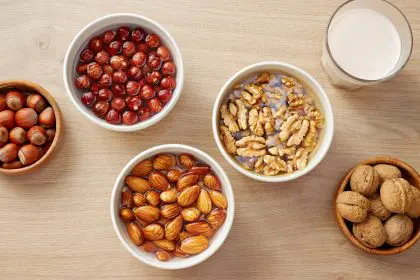The right dietary choices during pregnancy can help control gestational diabetes without medication while supporting healthy development
Gestational diabetes affects approximately 2-10% of pregnancies annually, presenting unique challenges for expectant mothers who suddenly need to monitor blood sugar levels while ensuring proper nutrition for themselves and their developing babies. This form of diabetes occurs when pregnancy hormones interfere with how insulin works, causing glucose to build up in the bloodstream instead of being absorbed by cells. Unlike type 1 or type 2 diabetes, gestational diabetes typically resolves after delivery, but requires careful management throughout pregnancy to prevent complications. A thoughtfully structured diet forms the cornerstone of gestational diabetes management, often eliminating the need for medication while supporting maternal and fetal health.
The balanced plate approach
Creating properly proportioned meals represents the fundamental strategy for managing gestational diabetes. The balanced plate method provides a simple visual guide that helps control carbohydrate intake while ensuring adequate nutrition. This approach divides each meal plate into three sections: half filled with non-starchy vegetables, one quarter with lean protein, and one quarter with complex carbohydrates.
The first component, non-starchy vegetables, includes options like leafy greens, broccoli, cauliflower, peppers, tomatoes, and zucchini. These foods provide essential vitamins, minerals, and fiber while minimally impacting blood sugar levels. Filling half the plate with these nutrient-dense options naturally limits space for higher-carbohydrate foods that more dramatically affect glucose levels.
The second component, lean protein, includes eggs, poultry, fish, tofu, and legumes. Protein helps stabilize blood sugar while supporting the increased protein demands of pregnancy. Including protein with every meal slows carbohydrate digestion, preventing rapid blood sugar spikes that particularly challenge those with gestational diabetes.
The third component, complex carbohydrates, focuses on whole grains, starchy vegetables, fruits, and legumes. While carbohydrates inevitably raise blood sugar, choosing complex, high-fiber options moderates this effect. Portion control within this section remains essential, as even healthy carbohydrates require careful management during gestational diabetes.
Carbohydrate distribution and counting
Distributing carbohydrates evenly throughout the day helps maintain stable blood glucose levels and prevents the dramatic spikes and crashes that can occur with larger, carbohydrate-heavy meals. Most women with gestational diabetes benefit from consuming three moderate-sized meals and two to three snacks daily, with carbohydrates carefully portioned at each eating occasion.
The first distribution strategy involves consistent timing. Eating at regular intervals approximately 2-3 hours apart keeps blood sugar levels more stable than consuming fewer, larger meals. This approach maintains a steady supply of energy while preventing prolonged fasting periods that can trigger blood sugar fluctuations and excessive hunger that may lead to overeating.
The second strategy focuses on carbohydrate counting, a method that tracks the grams of carbohydrates consumed at each meal and snack. While individual carbohydrate needs vary based on pre-pregnancy weight, activity level, and blood sugar response, most women with gestational diabetes aim for approximately 30-45 grams per meal and 15-30 grams per snack. Working with a registered dietitian helps determine personalized targets based on individual factors and blood glucose monitoring results.
The third component involves quality selection within carbohydrate choices. Even when counting remains consistent, the type of carbohydrates significantly impacts blood sugar response. Choosing whole food sources with higher fiber content generally produces more favorable blood glucose readings than refined carbohydrates with similar gram counts.
Protein prioritization
Adequate protein intake proves especially important during gestational diabetes, serving multiple functions beyond basic nutrition. Protein foods have minimal direct impact on blood glucose levels while helping stabilize blood sugar when consumed alongside carbohydrates. During pregnancy, protein requirements increase to support fetal development, placental growth, and maternal tissue expansion.
The first protein consideration involves including a source with every meal and snack. Options like eggs, chicken, fish, lean beef, tofu, tempeh, cottage cheese, and Greek yogurt pair well with carbohydrates to create balanced eating occasions. Even small amounts of protein, such as a tablespoon of nut butter with fruit or a string cheese with whole grain crackers, help moderate blood sugar response.
The second factor focuses on breakfast protein. Morning often presents the greatest blood sugar management challenge due to natural hormonal fluctuations that increase insulin resistance. Higher protein, lower carbohydrate breakfast options like eggs with vegetables, Greek yogurt with nuts, or a protein smoothie typically produce better morning glucose readings than traditional carbohydrate-heavy breakfast foods.
The third strategy involves varying protein sources to ensure a complete amino acid profile while avoiding dietary monotony. Animal proteins provide complete proteins containing all essential amino acids, while plant proteins may require combinations to ensure nutritional completeness. Incorporating both animal and plant protein sources creates dietary variety while supporting both maternal and fetal nutritional needs.
Strategic fiber incorporation
Dietary fiber plays a crucial role in gestational diabetes management through its ability to slow carbohydrate digestion and moderate blood sugar impact. Found in plant foods, fiber passes through the digestive system largely intact, helping regulate the absorption of nutrients including glucose. For pregnant women with gestational diabetes, gradually increasing fiber intake supports both blood sugar management and digestive health.
The first fiber strategy involves choosing whole grains over refined alternatives. Brown rice, quinoa, whole wheat bread, oats, and barley contain the bran and germ portions that provide fiber, whereas refined grains have these components removed. The fiber in whole grains slows digestion, preventing the rapid blood sugar spikes associated with their refined counterparts. Reading ingredient lists and looking for “whole” as the first ingredient helps identify truly whole grain products.
The second approach focuses on incorporating legumes regularly. Beans, lentils, and chickpeas provide an exceptional combination of complex carbohydrates, plant protein, and fiber that helps stabilize blood glucose levels. Adding legumes to soups, salads, and grain dishes increases both nutritional value and blood sugar management benefits. Their high fiber and protein content creates a gradual, sustained energy release ideal for gestational diabetes.
The third fiber strategy involves maximizing vegetable intake. Non-starchy vegetables provide fiber with minimal carbohydrate impact, making them ideal foods for blood sugar management. Consuming a variety of colorful vegetables ensures diverse nutrient intake while supporting digestive health and glucose regulation. Incorporating vegetables into multiple daily meals and snacks helps meet fiber goals while displacing higher-carbohydrate options.
Mindful fat consumption
While dietary management of gestational diabetes primarily focuses on carbohydrates, fat consumption also plays an important role in overall blood sugar regulation and maternal-fetal health. The type and amount of dietary fat affects insulin sensitivity, inflammation levels, and the development of the baby’s brain and nervous system.
The first consideration involves emphasizing healthy unsaturated fats. Avocados, olive oil, nuts, seeds, and fatty fish like salmon provide essential fatty acids that support fetal development, particularly brain and eye formation. These fats have anti-inflammatory properties that may improve insulin sensitivity, unlike saturated fats that potentially worsen insulin resistance when consumed in excess.
The second strategy focuses on incorporating omega-3 fatty acids. During pregnancy, omega-3 fatty acids, particularly DHA (docosahexaenoic acid), play critical roles in fetal brain and retina development. Sources like salmon, sardines, trout, walnuts, and chia seeds provide these beneficial fats. For women with gestational diabetes who may limit fruit due to carbohydrate content, fatty fish offers an alternative source of many essential nutrients.
The third approach involves using fat strategically with carbohydrates. Adding small amounts of healthy fats to carbohydrate-containing meals helps slow digestion and moderate blood sugar response. For example, adding avocado to toast, nut butter to an apple, or olive oil-based dressing to a grain bowl creates more balanced meals with gentler effects on blood glucose levels than carbohydrates alone.
Thoughtful hydration
Proper hydration supports overall health during pregnancy while assisting with blood sugar management for women with gestational diabetes. Maintaining adequate fluid intake helps prevent dehydration, which can concentrate blood glucose and lead to falsely elevated readings. Additionally, sometimes thirst signals get misinterpreted as hunger, leading to unnecessary eating that impacts blood sugar levels.
The first hydration priority involves emphasizing water as the primary beverage. Water provides hydration without adding calories, carbohydrates, or other substances that affect blood glucose levels. During pregnancy, water needs increase to support additional blood volume, amniotic fluid formation, and fetal circulation. Most pregnant women need approximately 8-10 cups (64-80 ounces) daily, with higher amounts needed during hot weather or physical activity.
The second consideration addresses sugar-sweetened beverages. Fruit juices, regular soda, sweetened tea, sports drinks, and many coffee shop beverages contain substantial amounts of rapidly absorbed sugars that dramatically impact blood glucose levels without providing proportional nutritional value. Eliminating or strictly limiting these beverages helps manage carbohydrate intake and blood sugar levels.
The third approach involves acceptable alternatives when plain water seems unappealing. Infusing water with cucumber, berries, or citrus adds flavor without significant carbohydrates. Unsweetened sparkling water provides variety, while herbal teas (approved for pregnancy) offer warming options. Limited amounts of milk can serve dual purposes as both hydration and nutrition, though its carbohydrate content requires counting toward daily totals.
Strategic snacking
Well-planned snacks play an essential role in gestational diabetes management, helping maintain stable blood sugar levels between meals while providing sustained energy throughout the day. Strategic snacking prevents excessive hunger that might lead to poor food choices or overeating at subsequent meals, both situations that can compromise blood sugar control.
The first snacking principle involves balanced composition. Effective snacks for gestational diabetes combine protein or fat with limited carbohydrates to prevent blood sugar spikes. Examples include apple slices with almond butter, cheese with a small portion of whole grain crackers, veggies with hummus, or a small Greek yogurt with nuts. This combination approach provides steady energy while supporting blood sugar stability.
The second strategy addresses evening snacks. A moderate bedtime snack helps prevent overnight low blood sugar while supporting liver glycogen replenishment, particularly important during pregnancy when fasting periods can be more challenging. Protein-containing evening snacks like a small handful of nuts, cheese stick, or spoonful of cottage cheese with a few berries help maintain stable blood glucose levels through the night.
The third consideration involves portable options. Preparing and carrying appropriate snacks prevents situations where only blood-sugar-unfriendly choices are available. String cheese, nuts, seeds, hardboiled eggs, and cut vegetables travel well in purses, workbags, or cars, ensuring access to gestational-diabetes-friendly options throughout busy days.
Managing gestational diabetes through dietary approaches requires attention to detail and consistent implementation, but yields significant benefits for both maternal and fetal health. By following these seven essential strategies, most women can effectively control their blood glucose levels while ensuring proper nutrition during this critical period. Working with healthcare providers, including registered dietitians specializing in pregnancy nutrition, helps personalize these approaches to individual needs and circumstances. With thoughtful planning and commitment, gestational diabetes can be well-managed through dietary means, allowing expectant mothers to focus on the joy of pregnancy rather than the challenges of this temporary condition.

















